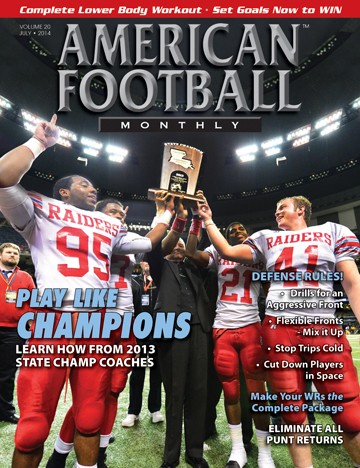Article CategoriesAFM Magazine
|
A Full Lower Body Workoutby: Rob BiasottiStrength and Conditioning Coach, St. Thomas Aquinas High School (FL) © More from this issue For our complete lower body workout, we have six rotating stations. Over the course of our training period, we begin with joint and postural stabilization and then conclude with training to express force quickly. The primary goal in this phase is strength endurance, joint and posture stabilization, and a strict focus on technique. Just because you’re in one phase does not mean that components of other phases will not be present. We always warm up and do core, stretch, and/or meditation at the end of each workout.
|
|
|||||||
| HOME |
MAGAZINE |
SUBSCRIBE | ONLINE COLUMNISTS | COACHING VIDEOS |
Copyright 2025, AmericanFootballMonthly.com
All Rights Reserved





